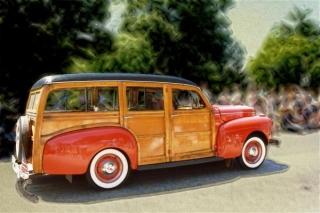Touring the Classics
The Black Hills is a fantastic travel destination. Taking your out-of-town visitors hiking and climbing in the Hills can be a really fun way to show them some of the things we enjoy year round. Of course, not all of your friends and family will be crag rats like ourselves, so it might be a good chance to go revisit some of the classic, easy routes around the Black Hills.For the less adventurous folk, think about taking them to the Sylvan Lake climbing area. Practice Rock, behind Sylvan Lake, offers very low-angle slabs that don't even require climbing shoes to surmount.
Near the Sylvan Lake dam is a low-angled bolted route that should be rated about 5.5. (Don't mistake it for the other nearby line of bolts that is clearly harder.) Besides a slightly run-out lead, it can be a really fun climb for people who don't climb very often—or at all. Once the rope is anchored, it can be top-roped to make sure all the cousins, aunts, and uncles have had some fun.
Two of my favorite classic climbs to show visitors (if they have had a little climbing experience before) are Aquarium Rock and Spire Four. Both are traditionally-protected lead climbs, but neither is technically challenging. For either of these climbs, you'll want to make sure each climber has proper equipment that they don't have to share with anyone else (e.g. harnesses, helmets, climbing shoes, etc). Protection only requires a standard rack and 60m rope.
Aquarium Rock is a really simple 5.3 grade climb right on Sylvan Lake facing the visitor's center. If you haven't done this route before, be sure to check the visitor center for the paper-back guide book. The climb has a variety of features and finishes with a great view of the lake.
Spire Four is one of those climbs that people will talk about for years. It never gets much harder than 5.4, and protection is very easy. The first real pitch of the climb is the only vertical pitch on the climb. This pitch also features the possibility to climb through the "cave:" a large boulder chocked between two spires that you can climb underneath and squeeze up through a hole that defies you to pull your body through. Some people may find it easier to climb the left-hand wall around the outside of the boulder, and avoid the cave. The second pitch involves traversing a few boulders and following a straight crack up a low-angle slab. The final pitch of the climb is mostly about the "step across." Stepping across a 3-foot gap in the rock with about 100 feet of daylight on either side demonstrates some of the unique climbing features in the Black Hills.
As always, be sure to be safe and make sure you know what kind of climb you're getting yourself and your friends into before you take the first step up the rock.
